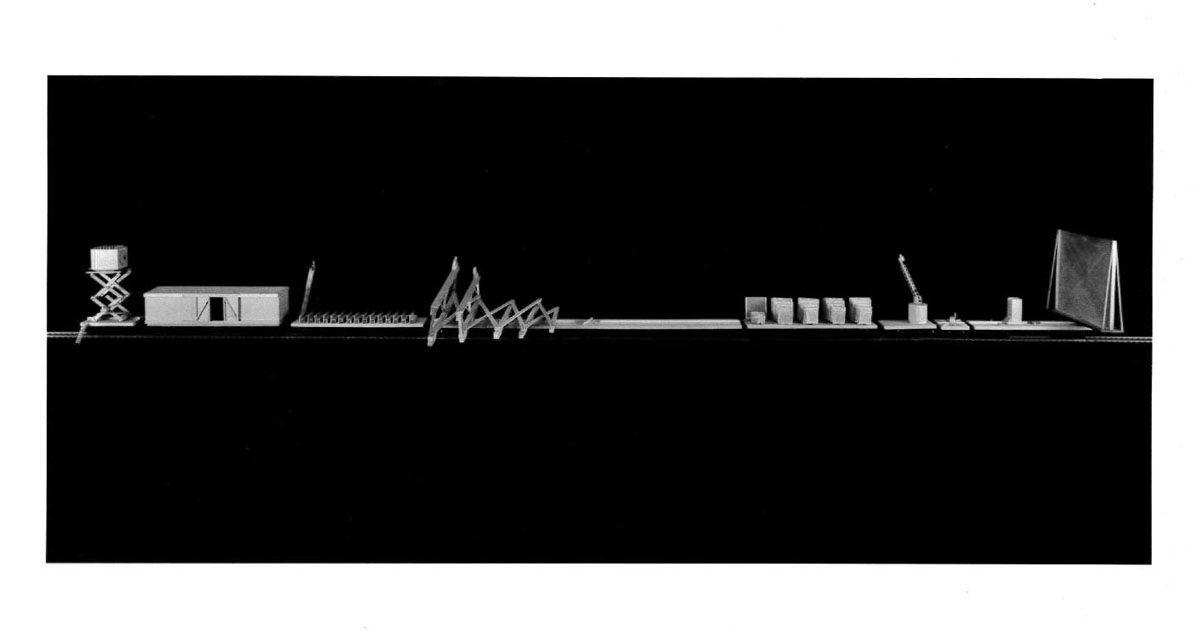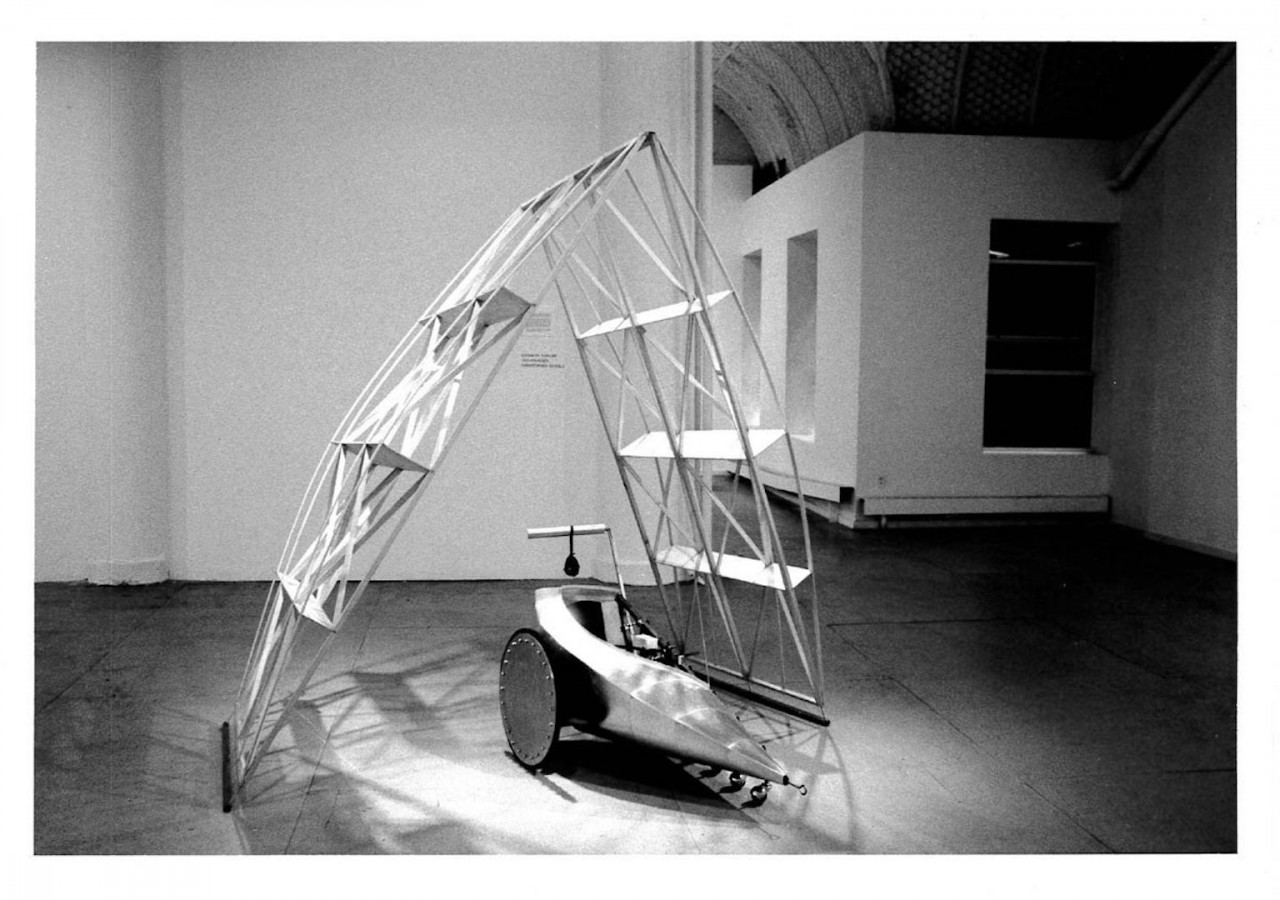May 24 – June 28, 1986
Artists Space
From Here to Eternity: Fact and Fiction in Recent Architectural Projects
Since Architecture:Sequences, the exhibition organized by Bernard Tschumi in 1981, a discourse around contemporary architecture had been largely absent from Artists Space's programming. Citing architecture's recent interest in questions that may have previously been confined to other art forms (in this case, fiction), Artists Space curator Valerie Smith writes, "Just as eternity can both be qualified abstractly, yet also be a permanently suspended unknown entity (in a sense a lie); so too, is architecture both predicated on the notion of permanency, yet vulnerable and impermanent." In From Here to Eternity, an awareness of that impermanence lifted the gates for a very open-ended investigation, through drawing, into architecture as an institution. Unpacking that idea further, an accompanying essay by architecture historian Beatriz Colomina examined architecture's means of dissemination, traditionally through professional journals, but increasingly via channels shared by the art world - namely, and in the case of this exhibition, the gallery. Colomina traces architecture's relationship to fiction back to the writings of Manfredo Tafuri (L'Architecture dans le Boudoir) to suggest that most architectural theorists focus on building production, and as a result overlook other ways in which architecture is diffused culturally (here, as "artistic text").
Eleven artists contributed work to the exhibition, with nearly all of the drawings featuring "projects" that would be impossible to realize. As one participant, Douglas Darden, wrote in the statement he submitted, "Architecture is nothing if not a critical meditation on finitude and failure."
Douglas Darden, formally trained as an architect, is currently Adjunct Professor of Architecture at Barnard College, NY.
Elizabeth Diller is an architect in private practice with Ricardo Scofidio. They both teach at the Irwin S. Chanin School of Architecture at Cooper Union, N.Y.
Donna Goodman has her own practice in New York and she is also a visiting associate professor at the Rhode Island School of Design and City College, C.U.N.Y.
Laura Hawkinson was trained as an artist as well as an architect. She is a partner with Hawkinson and Smith-Miller architects in New York.
Michael Kalil teaches at Parson School of Design and has his own practice in New York.
Kenneth Kaplan is editor of Pamphlet Architecture, Ltd., and a private contractor with Bond Ryder James, Architects.
Theodore Krueger is a partner with Norman Architectural Design, N.Y
Michael Webb is an Associate Professor of Architecture at New Jersey Institute of Technology and Architecture. He was a member of the British architectural group, Archigram.
Mark West is a Assistant Professor of Architectural Design at the College of Architecture, University of Kentucky.
From Here to Eternity: Fact and Fiction in Recent Architectural Projects Catalogue Cover
From Here to Eternity: Fact and Fiction in Recent Architectural Projects Exhibition Card, Back
From Here to Eternity: Fact and Fiction in Recent Architectural Projects Exhibition Card, Front
From Here to Eternity: Fact and Fiction in Recent Architectural Projects Press Release
From Here to Eternity has been made possible by a grant from the Equitable Real Estate Group, Inc.
Artists Space activities are made possible by the National Endowment for the Arts, a Federal agency; the New York State Council on the Arts, the Institute for Museum Services, and the New York City Department of Cultural Affairs; Art Matters, Inc., Equitable Real Estate Group, Foundation for Contemporary Performance Arts, Inc., the Jerome Foundation, Leonhardt Foundation, Betty Parsons Foundation, The Reed Foundation, Inc., Mark Rothko Foundation, and The Wallace Funds; the American Express Company, Mobil Foundation, Morgan Guaranty Trust Company of New York, Paine Webber, and Phillips Morris, as well as numerous Friends.





